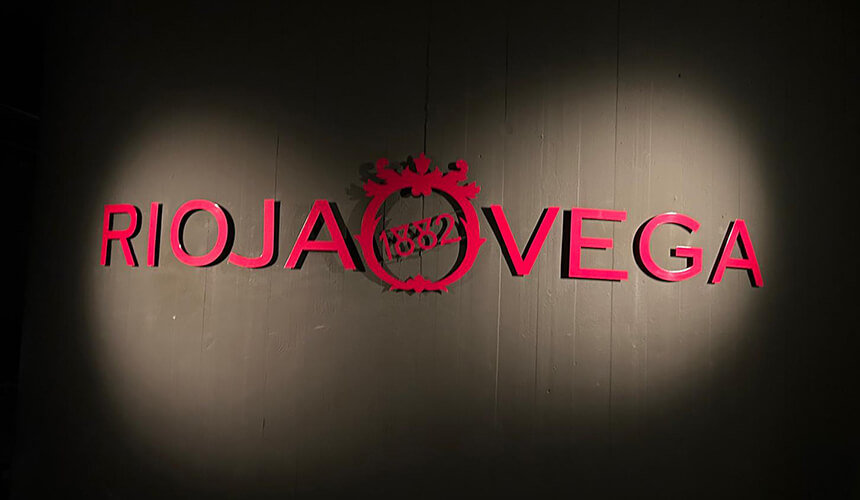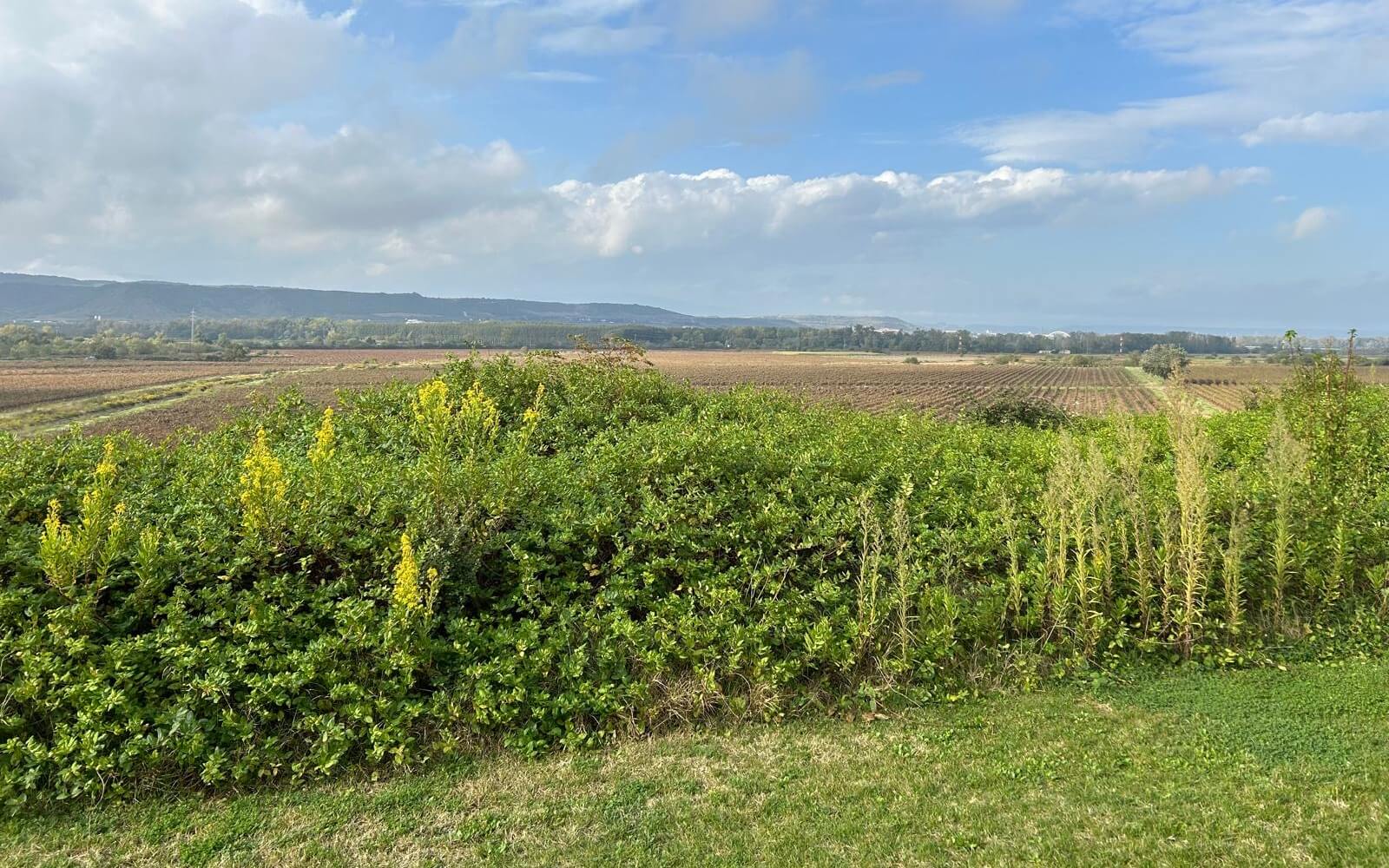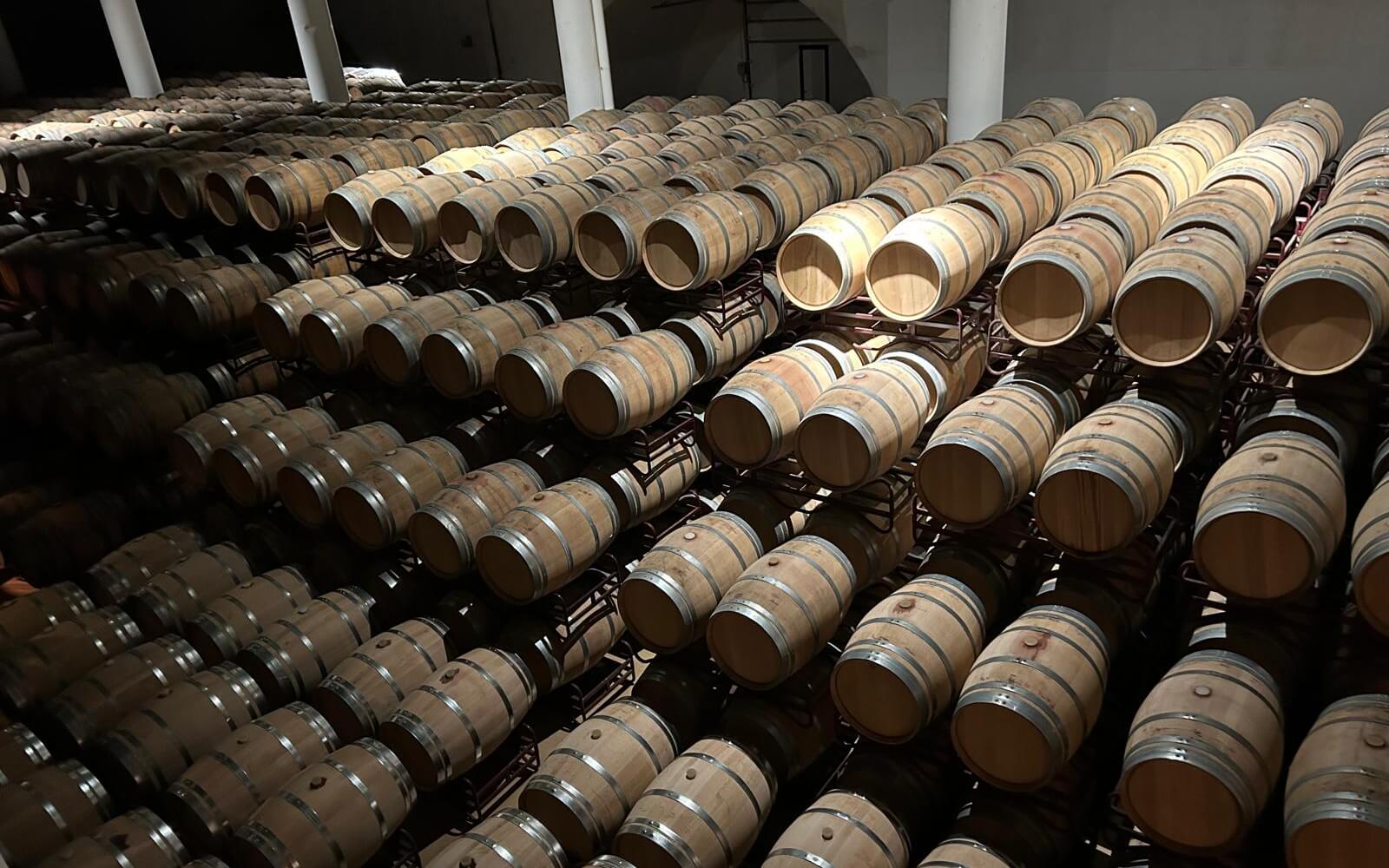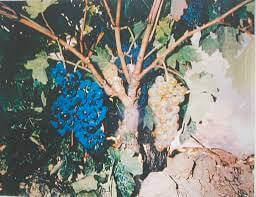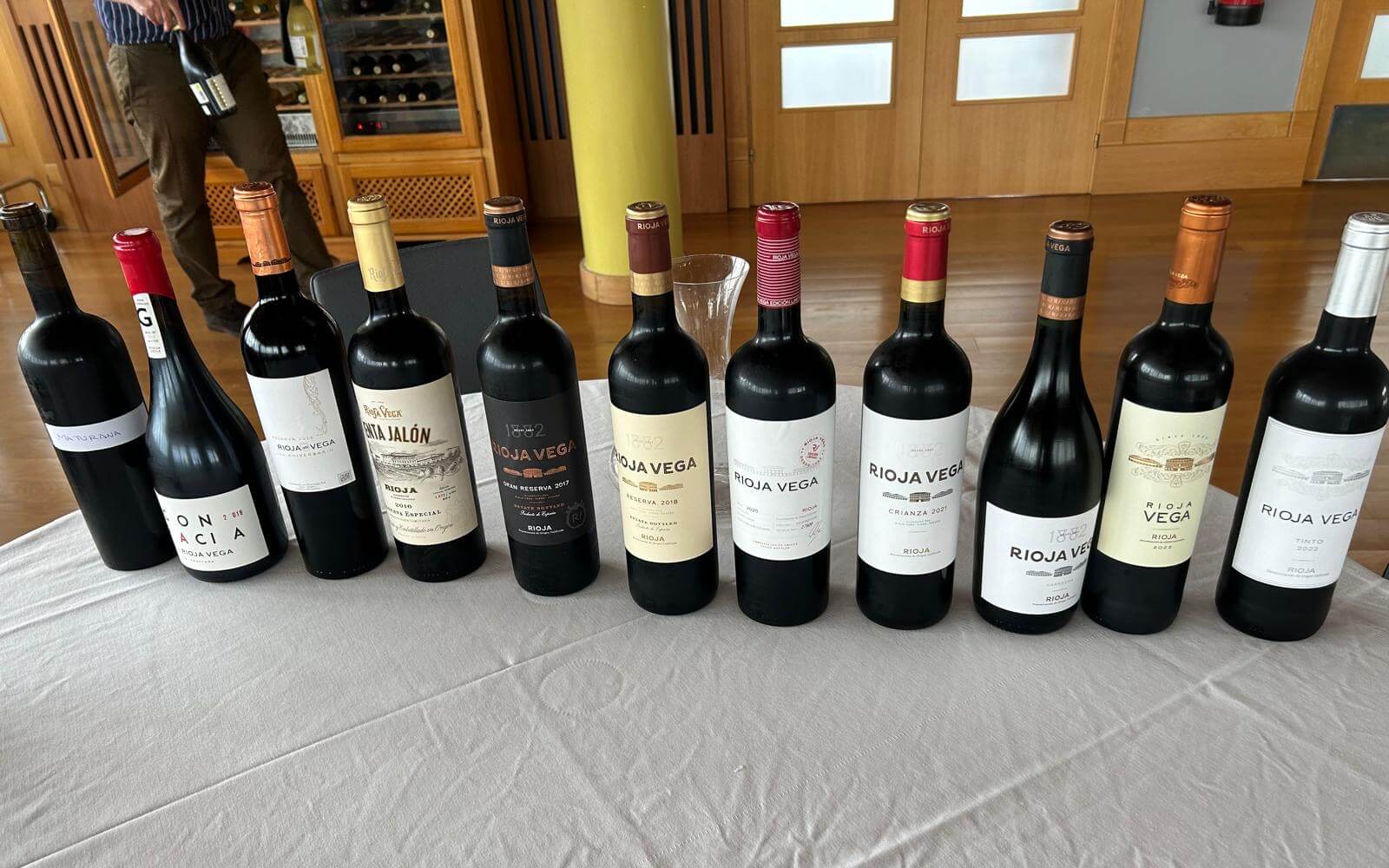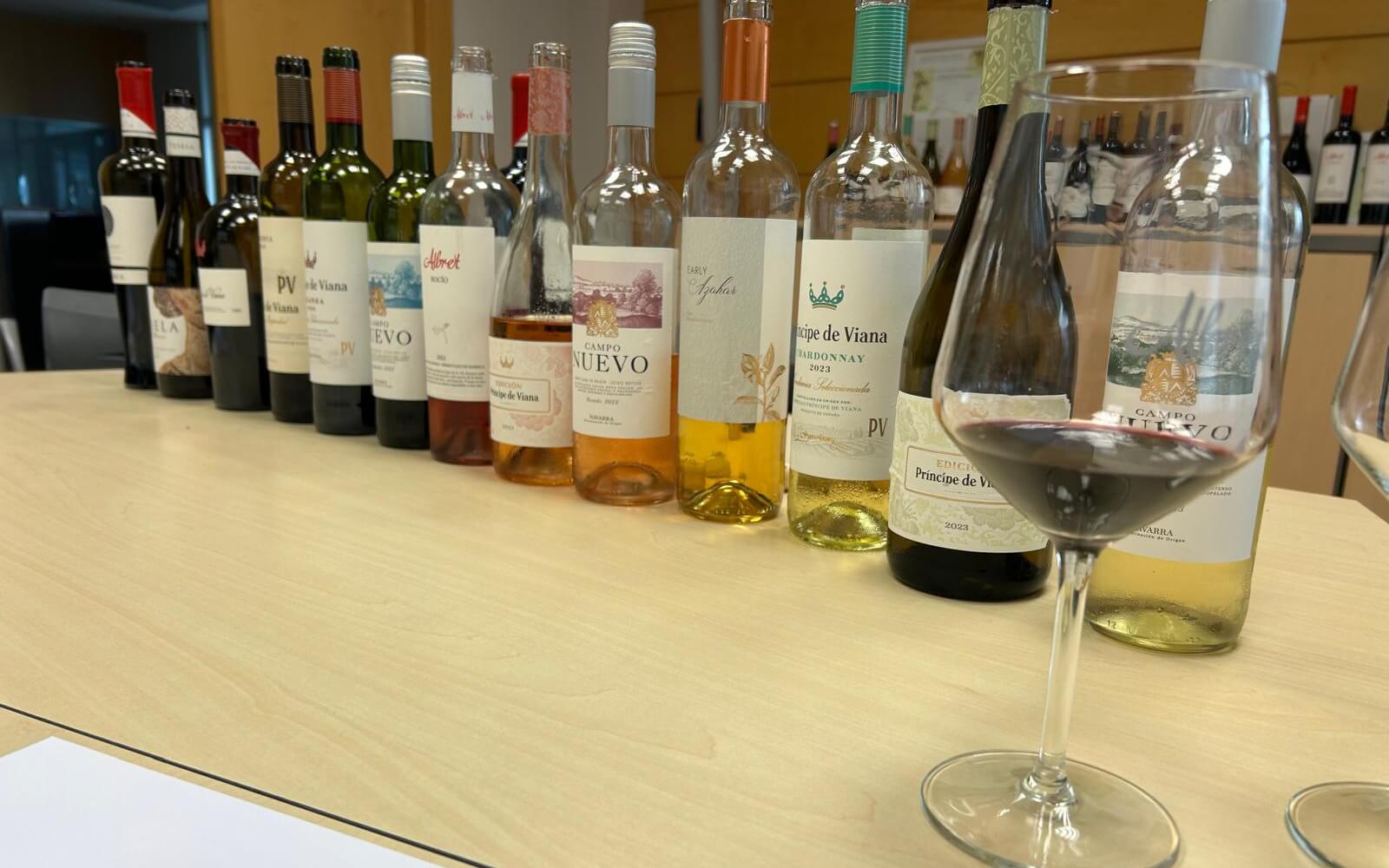I recently visited northern Spain and enjoyed a couple of excellent informative and thought-provoking tastings, the first of which was in Rioja, a region steeped in history and tradition. I came away realising that whilst the tradition is respected, innovation and change for the good is embraced.
The first visit was to Rioja Vega established in 1882 and now with an annual production of almost 2 million bottles produced from around 220 hectares. Head winemaker Esperanza Elías, who featured in the drinks business top 100 wine makers, joined the business in 2007 and has revolutionised the winery.
Firstly she embarked on a project to replace all barrels, ensuring none of the 4000 barrels in the cellars are over five years old. More recently she has undertaken projects developing new varietals along with projects in other regions – in fact the first wine tasted was one of these, from Rías Baixas in the northwest corner of Spain. Albarino Alba Vega has delicious quenching acidity with apple lime and saline notes.
Next came a series of three white Rioja’s - all based on, or fully made with the Tempranillo Blanco grape. This is a relatively new varietal which was discovered close to Rioja Vega around 30 years ago.
As you will see from the picture, a rogue bunch of white grapes was discovered on a red tempranillo vine with all other bunches unaffected. Caused by a genetic mutation, many growers would have simply discarded the bunch or dug up the vine and planted a new one.
Thankfully the bunch was found by a curious grower who shared the find - cuttings were taken and grafted and cultivation of the Tempranillo Blanco began. Initially volumes were tiny but gradually thanks to early adapters, such as Rioja Vega, volumes have grown.
The Tempranillo Blanco produces far more interesting and characterful wines than the more traditional varieties such as Viura and it has become the most important white varietal at Rioja Vega. I predict that over the next 10 years it will become the most important white grape for the entire region.
Rioja Vega Blanco is a light unoaked white Rioja comprising 55% Tempranillo Blanco, 40% Verdejo and 5% Viura. It is zingy and fresh with lemon peel and green apple notes. Onto the 100% Tempranillo Blanco - this is barrel aged for six months and has a much bigger riper flavour with ripe vanilla and toasted oak and a creaminess.
Finally the 2020 Tempranillo Blanco Reserva which is aged in first use French oak with a high toast for 12 months. This has an incredible concentration of fruit with peach and citrus notes leading to a long creamy finish. That evening we tasted this again with a plate of the best air dried ham I've ever tasted and the pairing was sublime – the mix of creaminess and saltiness absolutely incredible.
We moved on through a couple of rosés (pleasing to see they are now being made much lighter in colour which will help enormously commercially) and then through a range of red Rioja’s from the very soft approachable Rioja Vega Joven, juicy and warm Crianza (12 months in American Oak) to the 2018 Reserva (made with 85% Tempranillo and 15% Graciano and aged 18 months in American oak) before finally finishing with the 2017. The Gran Reserva is the same blend as the Reserva but with 24 months America oak.
There is rarely a winery I visit which doesn't include a mention and discussion of climate change. There is stark evidence of the impact - on average in Rioja the start of harvest is 2 to 3 weeks earlier than 30 years ago. Obviously, we all have a commitment to do our part to stem the tide but at the same time producers have to adapt to survive. Here at Rioja Vega and throughout the region there are new varietals permitted and experiments ongoing with new grapes. Our tasting concluded with a ‘Matura’ - a new varietal that looks set to be cultivated as a more heat and drought resistant variety in the region. The wine we tasted was good but still lagged behind the quality of the other wines. That said, it was Esperanza’s first vintage of this wine and I have no doubt that tastings in future visits will see this varietal become one of the stars from the winery.
I'll spare you the all the details of lunch in the stunning top floor restaurant of the winery surrounded by the vineyards. Needless to say, the white asparagus grown 3 miles away was superb, the red Peppers delicious and beautifully spicy and the lamb chops sublime!
After our long leisurely lunch, we headed an hour east to Navarra. Here the same group own a state-of-the-art winery and a staggering 500 hectares of vines; this is supplemented with grapes purchased from an additional 1000 hectares giving them an impressive 10 million bottle capacity.
The winery is run by the highly acclaimed Pablo Pavez another Drinks Business Top 100 wine makers. He's a humble but hugely talented Chilean winemaker who not only oversees all winemaking at Principe de Viana but is also in charge of all vineyards at both Rioja Vega and Principe de Viana.
The standout whites are Campo Nuevo Blanco, an 11% ABV blend of 80% Viura and 20% Chardonnay - this is outstanding entry level wine, clean, light, fresh and zingy. Also of note is Principe de Viana Chardonnay which spends just two months in American oak. The big point of difference here is the yeast. A lot of Chardonnay tastes of bananas and has a cloying tropical fruit – a result of commercial yeast. Pablo and his team are fully committed to cultivating and using natural yeasts; what a difference this makes and delivers this very classy elegant Chardonnay.
The Campo Rosé punched well above its price point and was a lot lighter in colour than previous vintages - well done Pablo for pushing back on the tradition of the region.
Onto the Reds, Campo Nuevo Tempranillo was also outstanding - this range of wines really do deliver. Then onto two wines which for me were the best value reds of the visit. A classic case of not paying for the name just what is in the bottle …
Principe de Viana Crianza (60% Tempranillo, 20% Cabernet & 20% Merlot), aged for 12-months in American oak – this is quite a serious wine, rich and ripe with good grippy tannins and a lovely hit of spicy raspberries.
Principe de Viana Reserva (100% Tempranillo) with 18-months in mainly American oak. This is Reserva Rioja in all but name – ripe berry fruit with a delicious sweet vanilla character – plum, blackcurrant and tobacco.
A fascinating trip to Spain, which highlighted the tradition, diversity and forward-looking approach the country has. I very much look forward to tasting these wines over the coming years and seeing the changes and new varieties and wines that follow.
Cheers!
David Archibald
Sales Director
 Back to blog
Back to blog


